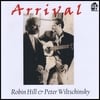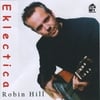It's official - Robin has a larger cerebellum and corpus callosum than your average person - well, he and most professional musicians that is.
Last night we watched a very interesting programme, 'My Brilliant Brain' on channel 5, that was examining the child prodigy, Marc Yu, and discussing whether his ability was from sheer hard work or whether he was born with a brilliant brain.
Apparently the brains of dozens of professional musicians have been scanned. There are very few activities that demand as much of the brain as playing music. In fact the scientist involved said it would be easier to look at the parts of the brain NOT involved when playing an instrument than those that are, just because of the amount of activity.
Music making is multi-tasking at the highest level. Musicians, pianists in this example, not only read the notes, but feel the keys, move the fingers and listen to what they are playing all at the same time.
It appears that musicians are 'built' for the job as some areas of their brains are larger than can be found in non-musicians.
One such area is the cerebellum. Normally this takes about 10% of the overall brain volume yet there are more nerve cells here than the rest of the entire brain. This area works harder and faster than other areas of the brain as it orchestrates the movement of thousands of muscle fibres in the body.
As a skilled pianist can play up to 30 notes/second with exquisite timing, a larger cerebellum would be a huge advantage.
The corpus callosum is also larger in musicians. This is a strip of tissue connecting the two hemispheres of the brain. Each side of the body is managed by one half of the brain, so a bigger corpus callosum means there are more nerve fibres so that more nerve signals can travel from one side to the other.
A larger corpus callosum is obviously an advantage to a musician as they need to precisely synchronise movement between the right and left hand side of the body.
The question is whether they were born that way, or, has music shaped their brains.
One interesting study shown on the programme looked at the brains of 50 children prior to learning an instrument and then periodically rechecking dexterity, intelligence and scanning them.
After a year they could see changes on the scans with the areas used for hearing and analysing music showing more activity than those children not learning an instrument.
The programme went on to examine studies undertaken on isolated children, which highlighted that certain skills can only be learned within a 'critical' period, and beyond that point the ability has gone. It also looked at studies carried out in the late 60's that found that underprivileged children, if given the right stimulation from birth to three years of age, will have an IQ advantage that will remain with them throughout life.
This is all proof that we need to talk to, stretch, stimulate our children from birth, but doesn't mean they will all grow up to excel at their given skill.
On the nature side of the debate, the general feeling seems to be that genes can give a predisposition to seek out an experience and then foster that skill.
So nature/nurture appear balanced....
In the case of Marc Yu, we will have to wait and see, if he continues to play/perform past puberty. An advantage for him is that he plays musically. He hasn't just learnt the pieces, which at that age would be incredible, but plays with passion.
I would be very interested to look at the brain scans of musicians of different instruments as the skills involved vary.
The flute is monophonic, whereas the piano and guitar are polyphonic. There are however differences within this as the pianist has one action for the right hand, with it reversed in the left hand, whereas the guitarist action between hands is very different in both position and movement.
Maybe one day they'll let me in a lab somewhere, I can call in a few musician friends, and wire them up.
There's more yet to be learnt I'm sure...
Reviews
'As always, it was sheer pleasure to observe Robin Hill's remarkable fluent technique: everything looks easy when he plays it.' Colin Cooper- Classical Guitar Magazine -----
'Wonderful for their (Hill & Wiltschinsky) precision, touch and clarity of sound... refined virtuosity, the achievement of a long interpretive process.' Il Giornale D'Italia (Rome) -----
'I loved your CD and thought your technique and performance were fabulous...' Rick Wakeman
Subscribe to:
Post Comments (Atom)


















No comments:
Post a Comment